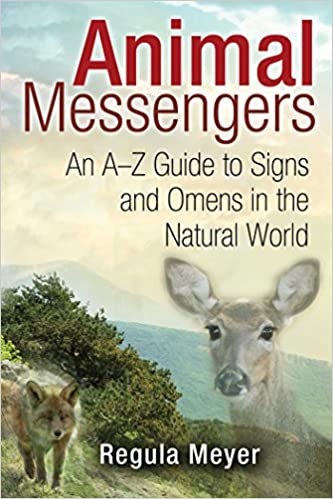
If there’s one thing most of us need it’s an occasional sign that we’re heading in the right direction. One thing indigenous people have that most others don’t is a deep connection with nature, which talks to them on a regular basis.
Yes, I’m talking about spirit animals and receiving messages from them.
This morning when I went outside to feed my feral cats this beautiful spider web caught my eye. The fact it was on my deck furniture was slightly less than enchanting, but the perfection of the spider’s handiwork got my attention, especially the way it glistened in the rising sun.
In many cases, if you’re paying attention, you can figure out such a message yourself by considering the animal and its characteristics. At other times, it might be more subtle. In that case, you need a reference of some description to help you figure out what the world is trying to tell you.
Fortunately, I have such a reference, the book “Animal Messengers: An A – Z Guide to Signs and Omens in the Natural World.”
Here’s an excerpt from what it says about spiders: “The spider symbolizes infinite possibilities. With its eight legs it is anchored in every direction, and it weaves together the powers of the elements and their expression into a unified whole. The spider weaves webs of fate, in which we can get caught, and it encourages us to keep searching for new possibilities and explore the endless steps of our journey of learning. If your attention is drawn to a spider it wants to remind you that you are constantly building new webs with your own thoughts, feelings, actions, and visions that contain tasks you must solve and subjects you must deal with.”
As is always the case with such an encounter, this had a very personal meaning to me.
If you’re not listening to what nature is telling you, you’re missing out. If you need a little help discerning what an animal is trying to say, I highly recommend this book by Regula Meyer. Note that it does not contain exotic animals you might see in a zoo, but concentrates on those you’re likely to see in the wild including mammals, birds, invertebrates, and insects, for a total of 145 different animals. It was originally written in German, so some birds common to the United States such as cardinals are not included, either, but overall it’s very insightful.
You can pick up a copy on Amazon using this affiliate link.

